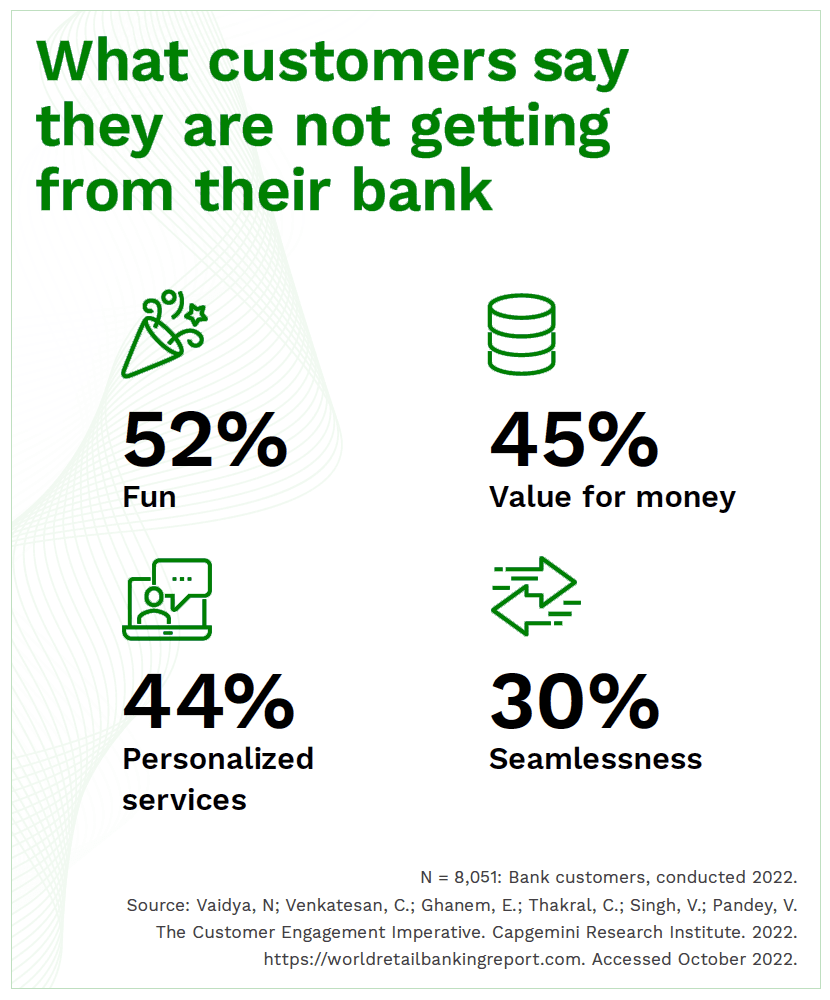PYMNTS Intelligence: How Cloud Banking Can Enable Embedded Payments

Customers — both personal and corporate — are more exacting than ever when it comes to digital banking.
Their complaints are as keenly felt as they are diverse, with customers saying their banks fail them in several fields.  Fifty-two percent of customers said their banking experience is not fun, 44% said that their banking services are not personalized and 30% said that they are not as seamless as they would like, according to a recent report.
Fifty-two percent of customers said their banking experience is not fun, 44% said that their banking services are not personalized and 30% said that they are not as seamless as they would like, according to a recent report.
Even worse, customers are willing to switch banks if their needs are left unsatisfied.
Banks are working hard to fix these deficiencies by deploying embedded banking solutions, but these are often impractical without a complete core modernization, which is difficult without turning to the cloud.
This month’s PYMNTS Intelligence explores the risks banks face when relying on legacy banking systems and how cloud banking can enable embedded payments.
Embedded finance solutions are key to providing the digital experiences that customers demand.
Ninety-two percent of FIs said they are currently implementing or planning to implement embedded finance experiences, according to PYMNTS’ research, with many different end goals. Fifty-two percent of FIs aim to innovate their payments processing, for example, while nearly 40% plan to improve their credit card offerings.
Embedded finance systems can be difficult or impossible to implement on outdated core systems, however.

A recent survey found that 58% of banks’ mainframe systems were between five and 10 years old, 27% were between 11 and 20 years old and 9% were 21 years old or older. Banks face a difficult choice: Go deep into the red to bring their legacy systems up to par or lose out on customers when they cannot provide satisfactory experiences.
Cloud migrations can offer banks an efficient way to upgrade their core systems and enable embedded finance solutions.
Eighty-two percent of banks plan to migrate more than half of their core systems to the cloud, including one in four that plan to move more than three-quarters. Nearly all of them will do so for cost purposes, with 91% of banks saying the cost to maintain their current core systems has increased in recent years.
Cloud migration can be a challenging task.
Half of the organizations said they had security concerns, 46% said they had difficulties integrating their data into their cloud servers and 43% reported performance challenges with network overlays. As cloud infrastructure grows more mainstream, however, banks can harness institutional expertise and make cloud systems — and by extension, embedded finance — table stakes for years to come.


